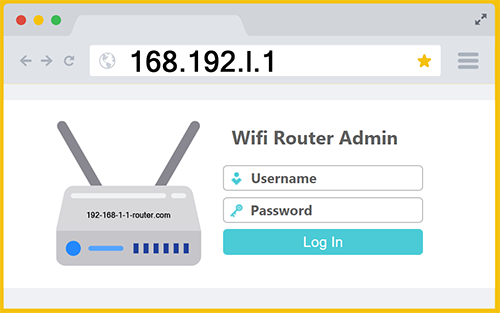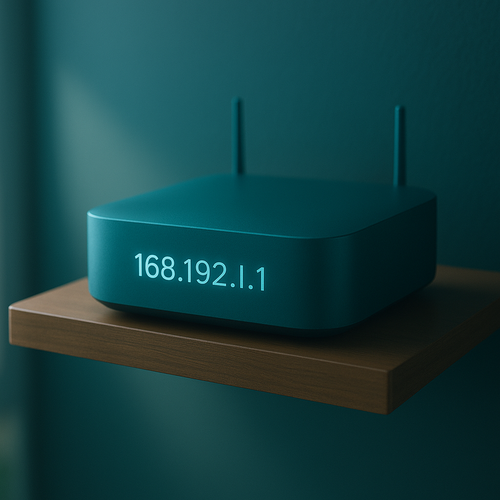168.192.l.1
 Guide to 168.192.l.1 Admin Login
Guide to 168.192.l.1 Admin Login
The address 192.168.1.1 is the main entry point to your router’s control panel, used by many wireless devices around the world. By typing this address into the browser’s address bar, you can open the router’s admin page and manage your network. Inside this control panel, you can update your WiFi name and password, adjust performance settings, and strengthen the security of your home connection.
Connect to 168.192.l.1 Dashboard

If you are trying to sign in to your router using 168.192.l.1, it will not work. That address is typed incorrectly, so it cannot connect you to your Wi-Fi router! To reach your network settings, type 192.168.1.1 in your browser’s address bar or use the button below to open the correct login page.
Standard login ID: admin
Standard password: admin or password
You can access your router’s settings from any device that’s already connected to your wireless network. Whether you’re using an iPhone or Android phone, all it takes is entering the correct IP address into your web browser. Many people mistakenly type 168.192.l.1 when trying to reach the router login page, but that address is invalid and will always fail to open.
192.168.1.1 vs. 168.192.l.1
Typing 168.192.l.1 will never open a router login page because it is not a valid IPv4 address. IPv4 uses four numbers separated by dots, and each number must be between 0 and 255. The string you typed has the first two numbers in the wrong order and it replaces the number 1 with the lowercase letter l. Browsers also treat malformed entries as a search, so instead of reaching your router you just see search results.
Most home routers sit on a private network range reserved for local use, commonly 192.168.x.x. The most common default is 192.168.1.1 which is used by huge brands like TP-Link, Netgear, and Cisco. The sequence 168.192.x.x is not the same thing at all, and any version that includes a letter cannot work which is why 168.192.l.1 is erroneous. Think of the address like a street number that must be exact or the delivery never arrives.
Before you try again, make sure the device you are using is connected to your own network by Wi-Fi or by an ethernet cable. Turn off any VPN for the moment, since that can route traffic away from your local network. Open a modern browser such as Chrome and use the address bar at the top of the window, not the search box in the middle of the page.
Step one, click in the address bar and clear anything that is already there. Step two, type 192.168.1.1 exactly as shown with dots and no spaces, and do not add www or quotes. Step three, press Enter and wait a few seconds for the login page to appear. Step four, enter the admin username and password if prompted. If you changed these before, use your saved credentials, otherwise try the defaults printed on the sticker under the router or in its quick start guide.
If 192.168.1.1 still does not load, it’s possible you made a mistake when inputting the IP address. For example: many people try to access 192.168.l.l admin or 192.l.168.1.1 admin which are both typos. It’s also possible the modem has a different admin gateway IP. Here is how to find the exact gateway your router is using. On Windows, open Command Prompt and run ipconfig, then read the number shown next to Default Gateway. On a Mac, open System Settings, choose Network, select your connection, and look for Router. On an iPhone or iPad, open Settings, tap WiFi, tap the blue info icon next to your network, and read the Router field. On Android, open Settings, tap Network and Internet, tap WiFi, tap your network, then Advanced to see the Gateway. Type that exact address into your browser and the login page should appear.
192.168.l.1 vs. 168.192.l.1
Reversing the first two octets gets you into the right private address neighborhood, but 192.168.l.1 is still not a real IPv4 address. IPv4 requires four numeric blocks separated by dots, and every block must be a number from 0 to 255. The character l is a letter, not the digit 1, so the browser cannot parse it as an address. Most browsers such as Firefox and Chrome will treat the string “192.168.l.1” as a search term, which is why you end up on a results page instead of your router login screen. Basically, it’s an improvement from 168.192.l.1 but still not valid. The correct path is simple. Use digits only and type 192.168.1.1 in the browser address bar, instead of 192.168.l.1 (and make sure there is no www and no spaces).
168.192.1.1 vs. 168.192.l.1
Changing 168.192.l.1 to 168.192.1.1 fixes the letter mistake but leaves the bigger problem in place. Home routers sit on private address ranges reserved for local networks, most often 192.168.x.x. When you flip only the third section, you are still using 168.192.x.x, which is not a private range at all. Your browser treats that as a public address and sends the request out to the Internet instead of to your local gateway, so nothing on your home network answers. In short, 168.192.1.1 still fails because the order of the first two numbers is the real issue, not just the third section.
To reach the router, you must swap those first two numbers so the address reads 192.168.1.1, and make sure you type digits only with dots and no spaces in the browser address bar. Be connected to your own WiFi or wired network, and turn off any VPN while you set this up. If 192.168.1.1 does not load, try other common gateways like 192.168.0.1 or 192.168.100.1, or check the default gateway on your device and use that exact value. Once you enter the correct address, the login page should appear.

Improving Wireless Signal
If you have ever noticed your Wi-Fi signal dropping in certain corners of your home, you might be surprised to learn that even small household objects can affect your connection. Mirrors, for instance, can reflect radio waves and weaken the signal, while microwaves and baby monitors often interfere with the same frequencies your 168.192.l.1 router uses. Even thick walls filled with metal wiring or plumbing can create dead zones that seem mysterious until you realize what is blocking the signal. Moving your router just a few feet higher, away from corners and large reflective surfaces, can make a huge difference in stability and speed. In some cases, this might be better than upgrading your Internet plan or computer hardware.